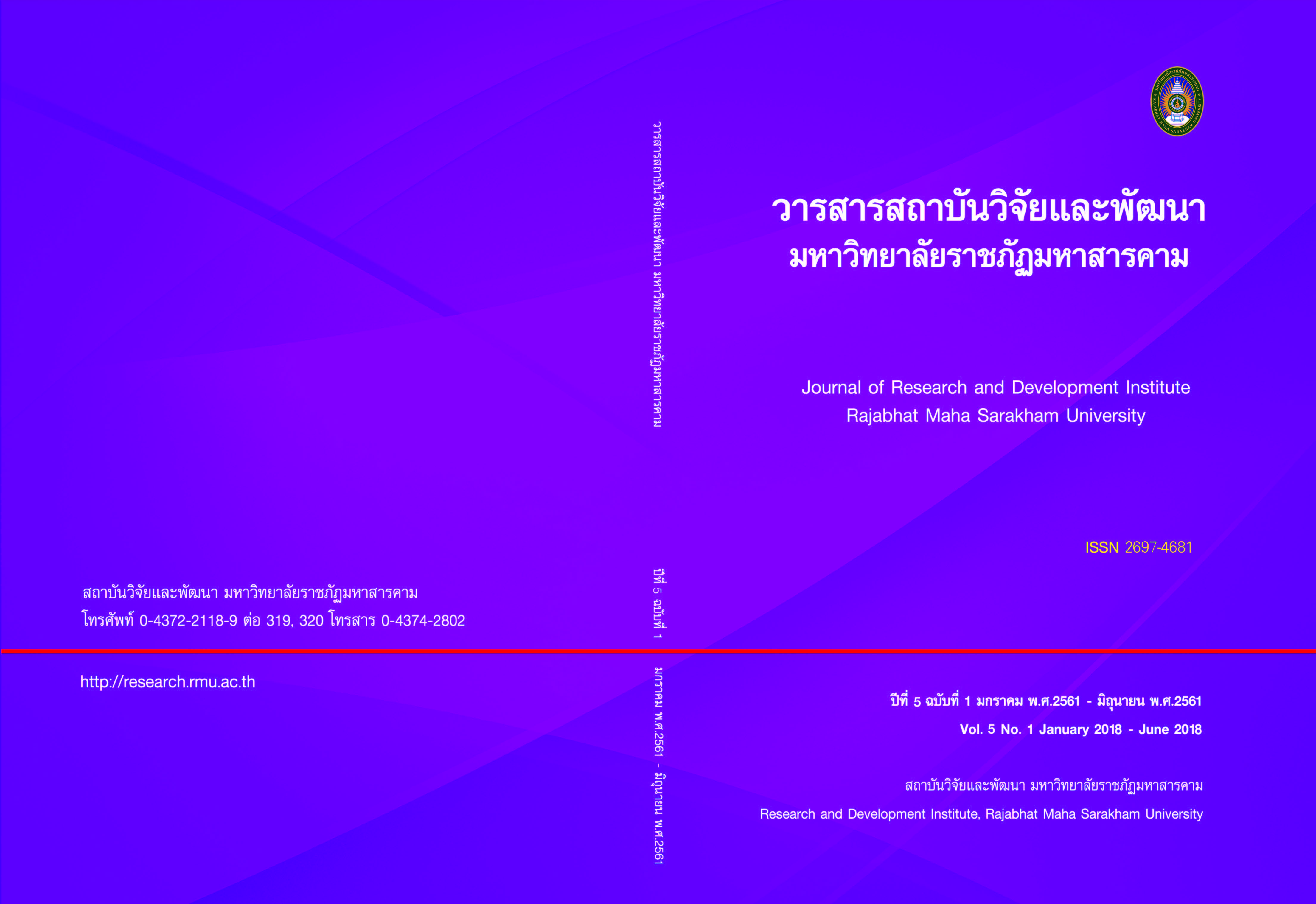The Strategies for Sustainable Drug Immunization Creation Prevention of the Youths in Bangkok Metropolitan
Keywords:
Strategies, Drug, Prevention, Bangkok MetropolitanAbstract
The objectives of this research were to propose the appropriate strategies of
sustainable. This research was mixed methods of both qualitative and quantitative. The
quantitative research was conducted by studying the sample of 205 directors from
schools in Bangkok Metropolitan who were selected by stratified random sampling
technique and the sample size was obtained by the calculation with Taro Yamane’s
formula. The research tool for data collection was a five rating scale questionnaire. The
data were analyzed the statistics consisted of percent, mean, standard deviation and
the hypothesis were tested by stepwise regression analysis. The qualitative research
was conducted by interpretation studying the documents, research, and theory related
including interviewing 17 key informants of governmental organizations in Bangkok
Metropolitan consisted of Bangkok governor, 10 directors, and 6 district directors who
were selected purposively. The data were analyzed using content analysis and
interpretation. Strategies were confirmed by focus group discussions conducted with 18
directors from schools who were selected purposively.
The research results were as follows: The appropriate strategies for sustainable
drug immunization creation and prevention of the youths in Bangkok Metropolitan
consisted of 6 approaches : (1) the strategy for creation of knowing and understanding
in drug danger and awareness by setting up and developing the learning and
entertaining areas for the youth in participative integration form, (2) the strategy for
secured society creation by promoting the cooperation in caring, protecting and helping
the youths in the form of muti-professional, (3) the strategy for warm family promotion
by joining hand with all sectors in organizing various relation activities for the families
continuously, (4) the strategy for strengthening the personnel performance by training
all personnel for having high cooperation capabilities in utilizing modern innovative
information technologies, (5) the strategy for developing the organizational
performance by setting up specific commanding center for drug immunization creation
and prevention of the youths equipped with drug specialists, devices and modern
equipment and (6) the strategy for strong network creation and development by
strengthening more incentives to both private and governmental sectors in sustainable
drug immunization creation and prevention.
References
Office of the Narcotics Control Board (ONCB). (2009). The Concept of Drug Prevention in Adolescent Risk. Bangkok : Rungsilp Printing (1997) Co., Ltd.\
Office of the National Economic and Social Development Board. (2015). The direction of the National Economic and Social Development Plan Vol. 12. Bangkok :
Office of the National Economic and Social Development Board, The Prime Minister.
Pornpuk Phanpis. (2009). Factors Affecting Narcotics Preventive Behavior of Student Phapradaeng Non-Formal and Informal Education Centre. Master of Arts Thesis
(Social Science for development) : Thonburi Rajabhat University.
Purachat Jandeang. (2017). “Analysis of Current Drug Situation Problem” Journal ofResearch and Development Institute, Rajabhat Maha Sarakham University, 4 (2)
: July–December 2017.
Saksan Khantee (2011). Development guidelines participation of peoples narcotic prevention and suppression of Sai Thong Watthana police station,
Kamphaengphet province. Master of Public Administration Thesis :Kamphaengphet Rajabhat University.
Sombat Pholar, Sanya Kenaphoom and Soawalak Kosolkittiamporn. (2017). “Strategies for Driving Good Governance in Basic Education School” Journal of Research
and Development Institute, Rajabhat Maha Sarakham University, 4 (1) :January–June 2017.
Sriwan, Sa-ard, Sanya Kenaphoom and Pakdee Phoosing. (2017). “Social Strength Based on Strength Family Institution” Journal of Research and Development Institute,Rajabhat Maha Sarakham University, 4 (2) : July–December 2017,Surasak.
Laohaphiboonkun. (2008). The Influence of Family, Social and Environmental Factors Effecting to Addiction of Secondary School Students in Bangkok. Master
of Arts Thesis : Srinakharinwirot University.
Thawatchai Makheng. (2007). Participation in the Prevention and Solution of Drug Problems of the Coordination of the National Force in the Vicetory Over Drug,
Toungkok Subdistrict, Songpeenong District, Suphanburi. Master of Public Administration Independent Study : Khonkaen University.
TM Younoszai, DK Lohrmann, CA Seefeldt, R Greene. (1999). “Trends from 1987 to 1991in alcohol, tobacco, and other drug (ATOD) use among adolescents exposed to a
school district-wide prevention intervention” Journal of drug education, 29 (1),77-94
Downloads
Published
How to Cite
Issue
Section
License
Articles that are published are copyrighted by the authors of the articles







